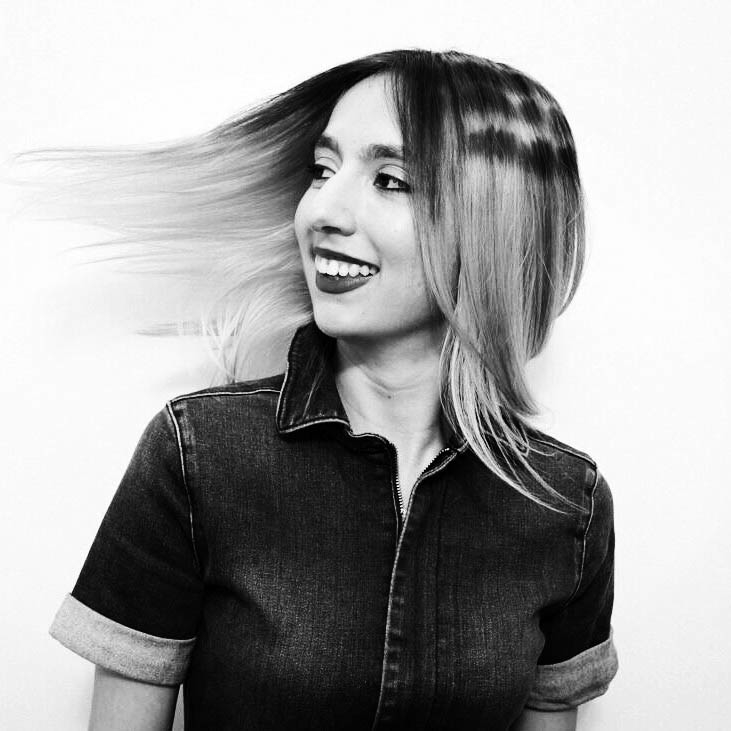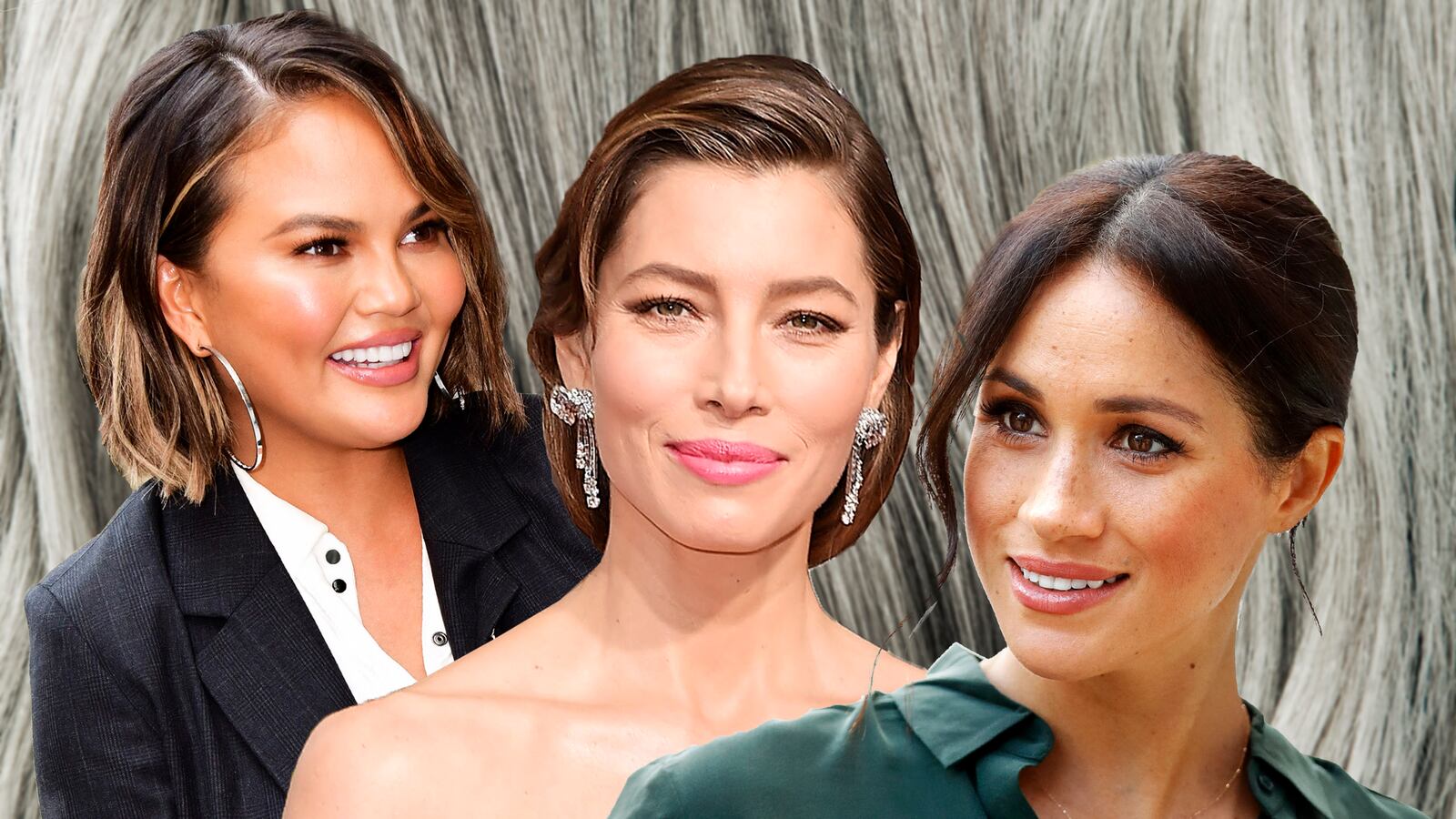Three months ago, I went gray at 23 years old. Tired of the extra attention that comes with being blond—and over being asked if I “had more fun” at every party for the rest of time—I wanted a new color that communicated seriousness. So one night, I leaned over my bathroom sink and drenched my strands with pastel gray dye.
My friends declared the look “rad” and “super cute” on Instagram. But in real life, while commuting or waiting in grocery store checkout lines, I earned outright glares from women of a certain vintage.
On the third day of my blue rinse period, a confused stranger blurted, “Did you do that on purpose?” Having spent time, energy, and money hiding her gray, she couldn’t fathom why I didn’t appreciate my natural hue.
I’m curious about what the gray-phobe would think of last month’s Comme des Garçons Paris Fashion Week show, which featured twentysomething models parading down the runway in white wigs by Julien d’Ys.
Vogue’s Lauren Valenti wrote that the move sent a “radical beauty message: Instead of hiding grays with endless monthly salon visits and silently resisting the loss of one’s youth, reject the norm, accept the power of your hard-earned age and wisdom—then own it.”
As Kristina Rodulfo, senior beauty editor at Elle.com, told The Daily Beast, “The interest in gray hair is part of a larger beauty trend moving away from the attitude of ‘fixing’ yourself and moving toward embracing imperfection. The narrative of what ‘beautiful’ means has gone democratic, and people like seeing themselves reflected in stories.”
A rousing battle cry, certainly, but easier said in a fashion glossy than done in the real world, where youth is chased to the tune of 26-year-olds splurging on preventative botox.
It’s true that society has long since lapped the days of Clairol hair dye advertisements that cryptically asked, “Does she... or doesn’t she?” as if outing someone for coloring her strands was akin to naming names in front of Joseph McCarthy.
Twenty years ago, a magazine might list putting off a colorist appointment and leaving the house with visible grays a “beauty don’t.” Now, such lists don’t really exist—like pencil-thin brows, prescriptive beauty advice is out.
That said, there are implicit right ways to go gray. It’s acceptable to sport a full head of monochromatic gray or white à la Helen Mirren, Emmylou Harris, Maye Musk, or Carmen Dell’Orefice. Or you can rep a Susan Sontag gray streak in your brown hair.
In September 2017, Maye Musk—yes, Elon’s mother—signed a contract with CoverGirl. She was 69 years old at the time. “I’m living proof that [you can] find work for an older woman,” she told Vanity Fair months before landing the gig.
“Have you seen Maye Musk for Covergirl!? HOT!,” Daley Quinn, a freelance beauty writer, wrote to me by email. “I think encouraging woman to go gray naturally is doing the opposite of suggesting that they fade away into orthopedic shoes and pantyhose. It's saying, ‘look, we think your gray hair is sexy enough to sell our beauty product.’”
But for Kara McGrath, deputy editor of fashion and beauty for Bustle, “It’s weird to turn someone into a hero because they don’t dye their hair.”
While a full head of “natural”-looking, silky silver is sexy, less conventionally alluring is the salt-and-pepper reality that often happens when women decide to ditch the dye. (Not so for men: “Silver foxes” like George Clooney receive gushing praise.)
“I’ve had women say to me, ‘I think I want to go gray,’ but I’ve noticed that most women are not cool with the awkward grow-out period,” said New York colorist Stephanie Brown. “I would say 80 percent of the time, my clients go back to dyeing their hair. Only 20 percent really commit to it.”
According to Brown, it takes about a year for “bob-length” hair to become a uniform gray.
Fun (but probably untrue) folklore suggests that when faced with the guillotine, Marie Antoinette’s hair turned ghost white overnight. Since then, the color has been commonly associated with stress.
Gray hair can be a mark of distinction, hard work, and strength under pressure. Every new one that springs up is earned through life, paying bills, and sending children to college.
As Quinn put it, “My gray hairs remind me so much of my mom, and I’m starting to really notice just how stunning she actually is to me. How could I get rid of something that reminds me so much of beauty?”
However, the sight of an errant root can symbolize another part of the body a woman doesn’t fully own for herself.
“What makes me uncomfortable and stressed about getting more gray hairs is that this change is out of my control,” said Erin Lukas, an associate beauty editor at InStyle.
It will take more than Meghan Markle’s one gray hair (does it have a name? Harry Jr.?) to undo a decades-long debate of what it means when “she does” or “doesn’t” get her hue from a bottle.
I didn’t stay gray, by the way. Figuring the color would end up on my head with time, I opted to move on to lilac pastures after just a month of living my most octogenarian life.
A woman’s hair color is not the most interesting thing about her—indeed, it’s probably not the tenth most interesting thing about her. But she could sure live without the judgment, whatever its shade.







